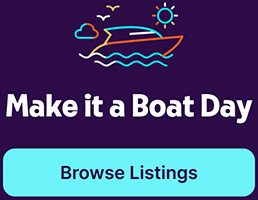Paddleboarding is an exciting water sport that combines elements of surfing and kayaking. It's a fantastic way to enjoy the great outdoors, get a full-body workout, and challenge your balance and coordination. However, for beginners, maintaining balance on a paddleboard can be a bit tricky. But don't worry! With the right techniques and a bit of practice, you'll be gliding across the water with ease and confidence in no time. Let's dive into some beginner-friendly tips to help you achieve stability and confidence on your paddleboard.
Understanding the Basics of Paddleboarding
Choosing the Right Paddleboard
Before you hit the water, it's crucial to choose the right paddleboard. The type of board you select can significantly impact your balance and stability. Here are some factors to consider:
- Size: Larger boards are generally more stable than smaller ones. As a beginner, opt for a board that's at least 10-12 feet long and 30 inches wide.
- Volume and Weight Capacity: These factors determine how much weight a board can support without sinking or becoming unstable. Make sure to choose a board that can comfortably support your weight.
- Type of Board: There are different types of paddleboards, including all-around, surf, touring, and racing. As a beginner, an all-around board is the best choice as it offers the most stability.
Proper Paddleboarding Gear
Having the right gear can also enhance your paddleboarding experience and help improve your balance. Here's what you need:
- Paddle: Your paddle should be about 6-8 inches taller than you for optimal performance.
- Personal Floatation Device (PFD): Safety is paramount when paddleboarding. A PFD can keep you safe in case you fall off your board.
- Leash: A leash connects you to your board, preventing it from drifting away if you fall off.
- Proper Clothing: Wear quick-drying, breathable clothing. In colder conditions, consider a wetsuit or drysuit.
Mastering Paddleboarding Techniques
Getting on the Paddleboard
Properly getting on your paddleboard is the first step towards maintaining balance. Here's how to do it:
- Start in shallow water where you can easily stand.
- Place your paddle across the board and hold onto it for stability.
- Get onto the board in a kneeling position, one knee at a time.
- Once you're stable, slowly stand up, one foot at a time.
Paddleboarding Stance
A proper stance can significantly improve your balance on a paddleboard. Here's the correct way to stand:
- Stand in the middle of the board with your feet hip-width apart.
- Your toes should be pointing forward, and your knees should be slightly bent.
- Keep your back straight, and look straight ahead, not at your feet.
- Keep your weight centered over the board, not leaning too far forward or backward.
Paddling Techniques
Proper paddling techniques can help you maintain balance and control your board effectively. Here's how to paddle correctly:
- Hold the paddle with both hands, keeping them shoulder-width apart.
- Keep your top hand on the grip and your bottom hand on the shaft.
- When paddling on the right, your left hand should be on top and vice versa.
- Use your core, not your arms, to paddle. This provides more power and control.
Improving Your Paddleboarding Skills
Practice Makes Perfect
Like any new skill, mastering balance on a paddleboard takes time and practice. Here are some tips to help you improve:
- Start in Calm Conditions: Begin your paddleboarding journey in calm, flat water. It's easier to balance when the water is not choppy.
- Practice Falling and Getting Back On: Falling off the board is part of the learning process. Practice falling off and getting back on your board safely to build your confidence.
- Take a Lesson: Consider taking a paddleboarding lesson from a certified instructor. They can provide valuable tips and feedback to improve your balance and technique.
Booking Your Paddleboarding Experience
Ready to put these tips into practice? Consider booking a paddleboarding experience, boat rental, or charter. Here's how to do it:
- Check Getmyboat: Getmyboat is a fantastic platform where you can find and book a wide range of water experiences, including paddleboarding lessons, boat rentals, and charters.
- Choose Your Experience: Whether you're looking for a beginner's lesson, a guided tour, or a paddleboarding yoga class, Getmyboat has something for everyone.
- Book in Advance: To ensure availability, it's best to book your experience in advance, especially during peak season.
With these tips and techniques, you'll be well on your way to mastering balance on a paddleboard. Remember, it's all about practice, patience, and enjoying the journey. Happy paddleboarding!
Book Your Next Paddleboarding Adventure with Getmyboat
Now that you're equipped with the knowledge to balance confidently on a paddleboard, why not make it a boat day and take your skills to the water? With Getmyboat, the #1 app for boat rentals and charters, you can easily find and book the perfect paddleboarding experience. Choose from a variety of options including boat rentals, jet skis, yachts, and more. Whether you prefer a captained journey or the thrill of a drive-it-yourself rental, Getmyboat connects you directly with boat owners and captains for a secure and hassle-free booking. Don't miss out on the chance to glide across the water and enjoy a personalized boating experience. Make it a boat day and start your paddleboarding adventure today!






